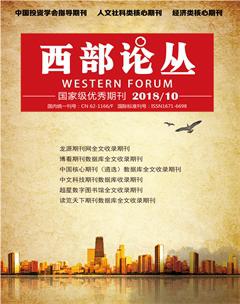Cultural Differences in Media Translation
戴玮
Abstract: Melvin Mencher, the professor of Columbia Universitys school of journalism classified the news values into eight aspects: timeliness, conflict, impact, the unusual, prominence, currency, proximity, necessity. There are also differences between the different cultures. Specialists are studying various methods to make the news readable to different readers both in linguistic and cultural aspects.
Key Words: media translation inverted pyramid style journalistic language
Media translation has a more complicated procedure which including deciding topic, selecting sources, titling and organizing. During the process of edit translation, translation should be particular about “faithfulness, expressiveness and elegance”, but the materials accepted or rejected, edited or not should submit to the established editorial policy and reported themes.
The titles of the Chinese version mainly use the negative words to draw peoples eyes. People usually pay more attention to the crisis, especially that of others. The English version follows the principle of succinct, so the grammatical details like plurals, tense are supposed to be omitted in order to make the title clear at a glance. What is the most important is that both of them extrude the subject of the news.
Concerning with the readability, the materials should be restructured. There are different kinds of news story structure in western journalism, like inverted pyramid style, annalistic style, DEE and so on. DEE is often used by The Wall Street Journal, which mainly applied to the reports of non-event news. It begins with a short story relevant to the theme. Then connect the story and the news facts with one or two changeover portions. After the facts, the articles will turn back the beginning story. The style has many advantages. First of all, the opening can draw readers eyes easily. Secondly, the transitions can naturally guide readers to the news subjects. Thirdly, the ending and the beginning can act in cooperation with each other, making smooth reading. It can impress readers.
Western journalists show special preference on the inverted pyramid style. Scholars of Missouri School of Journalism said in the western reported news “about 80% of the news is written in this way. Almost all of the news like financial which has specific readers is reported in the style”. We call it so because the structure of this kind of news is just like an inverted pyramid, whose important information is put in the front, and the later the less important. In this kind of news, especially the dynamic ones there is no specific ending. Since the latter facts are the least important, the articles should be ended here, instead of adding the so called punch lines. When the space of the report is not enough, the first information cut is the punch lines. The structure includes lead, main body and ending.
Lead always makes the clear purpose at the very beginning. Now that the edit translation contains more than one fact, we should write lead ourselves. It should be concise and fresh or succinctly generalize the whole passage. In addition, it should allure readers to continue reading. The professor of Columbias School of journalism, Melvin Mencher wrote “journalists should answer what, who, when, where, why, and how…A good lead can satisfy two requirements: announcing the key content and attracting readers to continue reading”. The English one differs in the Chinese. It will be shorter, and pays more attention on the time and provenance.
During the procedure of translation, the journalistic language should be as short as possible. Instead of the integrity phrases, the breviary words are preferred. To combine sentences is the mostly used method. Meanwhile SOV structure needs to be used. The translation of direct and indirect quotations is complicated too. Usually the word said by normal people is no need to be translated exactly. But the comments of important officers should be translated in the exact way. If it is a direct quote, we would better not change it to the indirect. Eventually some additional information like background and explanation should be added to make the news have the
readability.
References:
[1] P Cattrysse. Multimedia and translation: methodological considerations
[2] Y Gambier, H Gottlieb. “(Multi) media translation: concepts, practices, and research”. J.Benjamins, 2001
[3] 馬文丽. 传媒翻译中的“中国英语”. 《武汉理工大学学报(社会科学版)》, 2009 , 22 (4): 140-143
[4] 张晓雯. 从传媒翻译看中西方跨文化交流《中国校外教育旬刊》. 2015 (4):194-194

